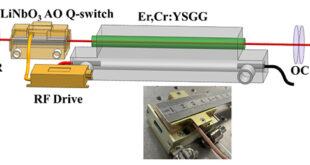Significance
Spatial light modulators (SLMs) are devices that can modulate properties of light waves, such as phase, amplitude and polarization. Thanks to technological advances over the past decades, SLMs have increasingly found widespread applications in various fields in optics and photonics. This can be attributed to their ability to create structured beams or shaped pulses.
SLMs are extensively used in numerous applications, including data storage, material processing and optical microscopy. Nevertheless, despite their numerous advantages, the inherent limitations of SLMs are big obstacles to their widespread applications. With the widespread application of SLMs, the need to address the bit-depth and spatial resolution problems common to most SLMs is urgent.
Temporal control of attosecond pulses is a good example of an application that is significantly impacted by the bit-depth. Another common limitation of SLMs is the zeroth-order beam, or the part of the beam that is not shaped. Whereas this issue can be effectively controlled in some applications, it must be suppressed to improve performance in other applications like holographic data storage. A common method to suppress it is to add a linear slope below the desired phase effect.
Herein, graduate student Geoffrey Harrison, Dr. Tobias Saule, Dr. Brandin Davis, Professor Carlos Trallero-Herrero from the University of Connecticut presented a novel method for mitigating the bit-depth limit by increasing the phase precision of the SLM devices. The presented technique was based on adding irrational linear slopes in addition to the desired phase to increase the device’s effective bit-depth through an effect similar to volume averaging. Their research work is currently published in the journal, Applied Optics.
The research team reported an increase in the effective bit-depth of the device. The irrationally valued slopes have uniformly distributed and densely packed mask values. The experimental results showed that these fractional parts allowed higher precision features than the bit-depth to effect the beam. Theoretically this could allow an 8-bit SLM to act as an 18-bit one. An increase in phase resolution was achieved at the expense of spatial resolution, although it had no effect on the bit rate and refresh speed of the device.
The authors verified the feasibility of the new method using two interferometric transient absorption spectroscopy setups utilizing a combination of irrational linear slopes with overall phase offsets. Step sizes were obtained in the time delay of attosecond pulses 3 – 6 times smaller than what could be obtained using other available methods. Interestingly, the approach counters the contemporary trends of faster bit rates and an increased number of pixels but reduced bit depth. This provided a general approach for applying this method in the industrial setting.
In summary, a technique for overcoming the bit-depth limitations of SLMs was presented and experimentally verified. This approach simultaneously addressed two SLM limiting factors: overcoming bit-depth limits and suppressing the zeroth order reflection. The authors expressed confidence that the presented method could be used to gain multiple orders of magnitude with more precision beyond what was measured and obtained in this study. In a statement to Advances in Engineering, Professor Carlos Trallero-Herrero explained that their study would improve the performance and application scope of SLMs.
Reference
Harrison, G. R., Saule, T., Davis, B., & Trallero-Herrero, C. A. (2022). Increased phase precision of spatial light modulators using irrational slopes: Application to attosecond metrology. Applied Optics, 61(30), 8873.
 Advances in Engineering Advances in Engineering features breaking research judged by Advances in Engineering advisory team to be of key importance in the Engineering field. Papers are selected from over 10,000 published each week from most peer reviewed journals.
Advances in Engineering Advances in Engineering features breaking research judged by Advances in Engineering advisory team to be of key importance in the Engineering field. Papers are selected from over 10,000 published each week from most peer reviewed journals.

